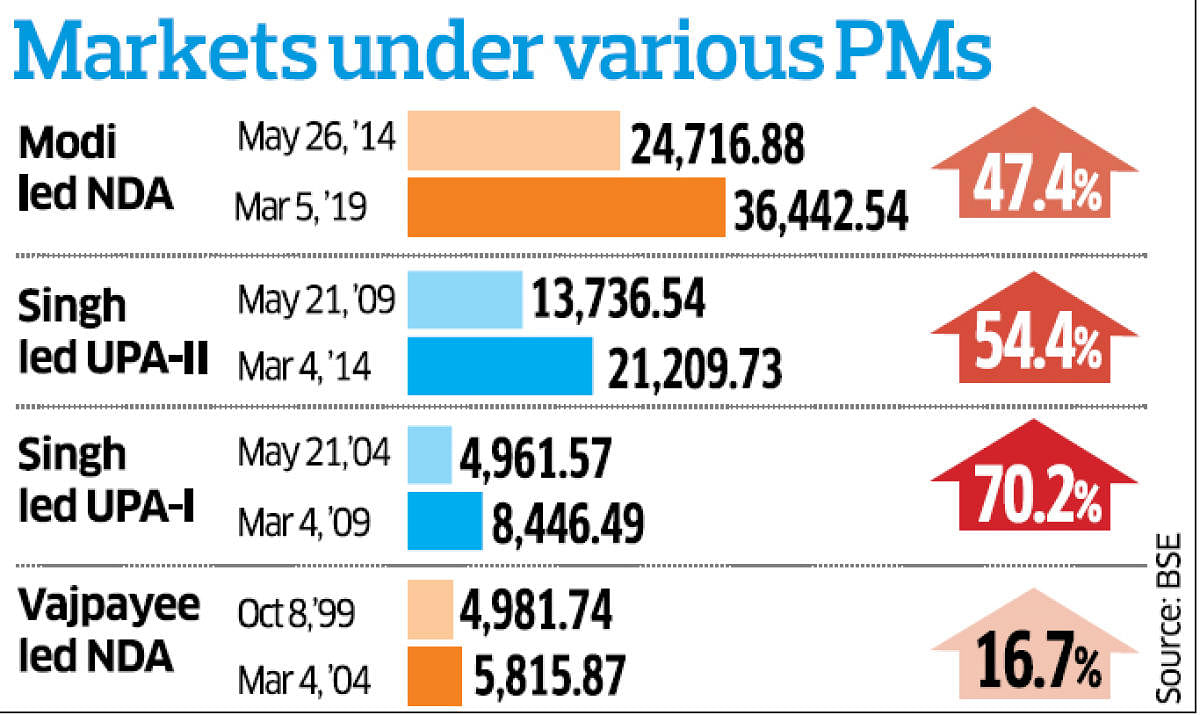It may seem strange given that the Bharatiya Janata Party (BJP) is the darling of stock markets, but company shares have performed better when the Congress-led United Progressive Alliance (UPA) was in power, a DH analysis of the past 20 years shows.
The underwhelming performance of stock markets under the BJP-led National Democratic Alliance is due to both global factors and policy missteps such as demonetisation, analysts said.
During the five years of the Narendra Modi-led NDA government, the Bombay Stock Exchange 30-share Sensex grew by 47.4%, against 54.4% under UPA-II and 70.2% under the UPA-I, both led by Manmohan Singh, BSE data reveals. During Atal Bihari Vajpayee’s BJP government from 1999 to 2004, the Sensex grew by a mere 16.7%.
The differential in the 50-share NSE Nifty was lower, but the trend is similar. The NSE Nifty has grown by 47.5% during the Modi tenure, while it grew by 49.6% and 69.5% under UPA-II and UPA-I, respectively. It grew 24.6% when Vajpayee was in power.
According to analysts, market growth in Modi years has tracked growth in the economy, which took a hit due to the demonetisation drive launched in November 2016, and the glitch-ridden implementation of the Goods and Services Tax (GST). “Demonetisation and GST implementation have led to certain disruptions in the economy and overall market movements,” said Kavita Chacko, Senior Economist with Care Ratings.
The markets have been hit by a smaller inflow of the foreign funds as well. Inflow from foreign institutional investors (FIIs) during Modi’s tenure stands at Rs 3.67 lakh crore, a dip of nearly 40% from Rs 6.03 lakh crore during UPA-II, on the back of rate hikes by the US Federal Reserve. “It is more to do with USD strength. Whenever the interest rate in the US goes up, USD strengthens, money goes to the US,” a CEO of a domestic investment firm said, asking not to be named.
The numbers have reflected in corporate earnings as well. During this government’s term, except for FY17, when India Inc saw a growth of 17.5%, the bottom line numbers have fallen — a decline of 0.2% in FY15, 12.3% in FY16, and 25.3% in FY18. One silver lining is that FY19 is going to be better as the nine-month aggregate profits have crossed the full-year figure of last year.
